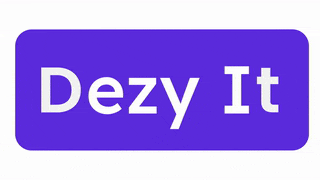Understanding the Rise in Administrative Work in Hospitals and Its Impact
- purvasha
- Dec 2, 2024
- 2 min read
The healthcare industry is experiencing unprecedented changes, with administrative work rising to meet the demands of an evolving system. For clinic owners, managers, and investors, understanding these trends is critical to staying ahead. This blog explores the factors driving increased administrative workloads in hospitals, their implications, and strategies to manage them efficiently.

1. Key Drivers Behind the Rise in Administrative Work
a. Regulatory Compliance
Hospitals and clinics face an ever-growing list of regulations, requiring meticulous documentation and adherence to policies. These include patient privacy laws like HIPAA and increasingly complex billing and reimbursement protocols.
b. Increased Patient Volume
The aging population and expanded healthcare access have led to higher patient loads, creating more demands on administrative systems for scheduling, billing, and care coordination.
c. Technology Integration Challenges
While digital tools such as EHRs (Electronic Health Records) offer efficiency, their integration often adds short-term administrative burdens. Transitioning to and maintaining these systems require significant time and training investments.
d. Staffing Shortages
A persistent shortage of healthcare workers, particularly in non-clinical roles, exacerbates administrative challenges. With fewer hands on deck, existing staff often handle overwhelming workloads, leading to burnout and inefficiencies.
2. The Impact of Rising Administrative Burdens
a. Financial Pressures
Higher administrative costs impact clinic profitability, particularly for smaller practices that lack the resources to scale operations effectively.
b. Workforce Challenges
The stress of excessive administrative duties contributes to staff burnout, affecting employee retention and overall morale.
c. Patient Experience
Administrative inefficiencies can lead to longer wait times, errors in billing, and fragmented care delivery, negatively impacting patient satisfaction and trust.
3. Strategies to Address the Administrative Workload
a. Leveraging Automation and AI
AI-powered tools like conversational AI can automate routine tasks such as appointment scheduling, follow-ups, and document management, freeing staff to focus on high-value activities.
b. Outsourcing and Virtual Back Offices
Many hospitals are turning to virtual back-office services to handle coding, billing, and data entry tasks cost-effectively while ensuring 24/7 operational support.
c. Training and Workforce Development
Investing in staff training, particularly in using advanced healthcare technologies, ensures smoother adoption of new systems and reduces inefficiencies.
d. Focus on Interoperability
Seamlessly integrating technologies such as EHRs with other hospital systems ensures smoother workflows and minimizes duplicative efforts.
4. Opportunities for Investors
The rising administrative demands open avenues for investments in health tech solutions and service providers offering virtual staffing, automation tools, and workforce management platforms. These solutions are essential for clinics seeking to streamline operations and reduce costs while maintaining high standards of care.
Conclusion
The surge in administrative work in hospitals and clinics is both a challenge and an opportunity. By embracing innovation, leveraging technology, and optimizing workforce management, healthcare providers can turn these challenges into a competitive advantage. For clinic owners, managers, and investors, staying informed and proactive is key to thriving in this dynamic landscape.
Learn more at:

